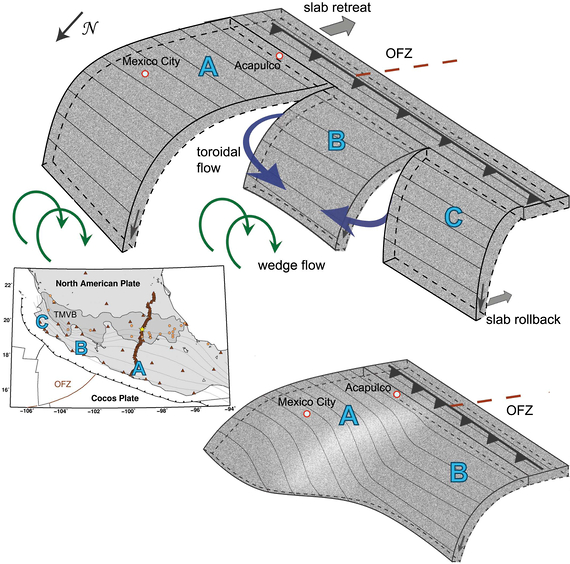UCLA press release of our Science paper

Scientific research articles
Congratulations to graduate student Erik Weidner for submitting the first paper of his thesis for publication in Geophysical Journal International! Preprint available here: https://doi.org/10.31223/X5QW31
Excited for this new paper to be in press! Fischer, K.M., Rychert, C.A., Dalton, C.A., Miller, S.M., Beghein, C., and Schutt, D.L. (2020), A comparison of oceanic and continental mantle lithosphere, Physics of the Earth and Planetary Interiors, doi:10.1016/j.pepi.2020.106600
Graduate student Haotian Xu submitted his second first-authored paper (and first InSight first-authored paper) to JGR – Earth and Space! The manuscript is entitled “Measuring Fundamental and Higher Mode Surface Wave Dispersion on Mars From Seismic Waveforms”.
C.B. co-authored a paper entitled “Comparison of Oceanic and Continental Mantle Lithosphere” that was submitted to the journal Physics of the Earth and Planetary Interiors.
Exciting news! A series of papers have just been published in Nature Geoscience to present the first results of the InSight mission. Check them out here
Our paper on 3-D global SH wave azimuthal seismic anisotropy was accepted for publication in JGR. The models are available for download
UCLA press release of our Science paper

Paper entitled “Three-dimensional variations in Love and Rayleigh wave azimuthal anisotropy for the upper 800 km of the mantle” by Yuan and Beghein on SH azimuthal anisotropy submitted to Journal of Geophysical Research – Solid Earth
Our paper “Seismic anisotropy changes across upper mantle phase transitions” was accepted for publication in Earth and Planetary Science Letters. Good job Kaiqing!
Paper by Stubailo, Beghein, and Davis “Structure and anisotropy of the Mexico subduction zone based on Rayleigh-wave analysis and implications for the geometry of the Trans-Mexican Volcanic Belt” published in JGR:
*Stubailo, I., Beghein, C., Davis, P., Structure and anisotropy of the Mexico subduction zone based on Rayleigh-wave analysis and implications for the geometry of the Trans-Mexican Volcanic Belt, J. Geophys. Res., 117, B5, B05303, doi:10.1029/2011JB008631, 2012
